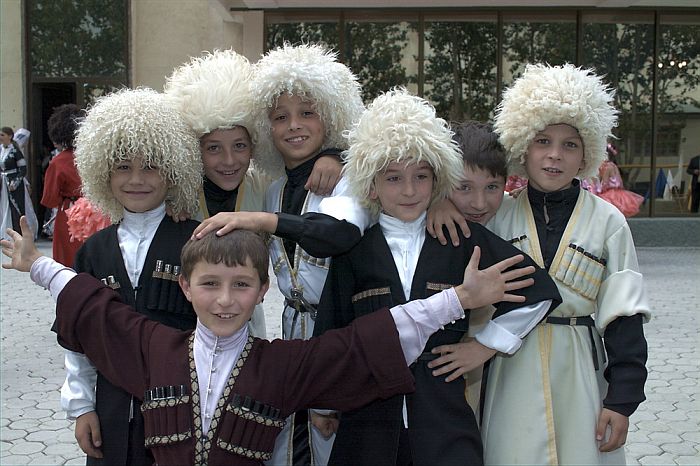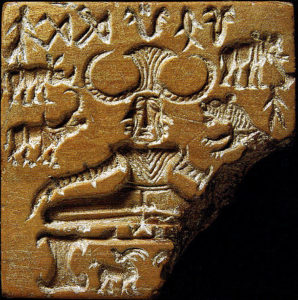
This post needs to published mostly to clarify some issues in relation to terminology. The genetics is moving fast, and people are going to get overwhelmed.
First, the term Aryan, or Arya, is not exclusive to South Asia. As most of you know it was used by many (though not all!) Iranian peoples. The Indic and Iranian branches of the Indo-European language family are close enough they form a very tight clade. The only comparison might be Baltic and Slavic, though some have asserted that that is due to the fact that Baltic peoples have lived so close to Slavic peoples for such a long time.
Though in the main Iranian peoples are in close proximity to South Asia, or in West Asia (e.g., Kurds), one group is exceptional in that it has no connection to West or South Asia: the Ossetes. These people on the northern fringes of the Caucasus are descended from Iranian steppe pastoralists who never went south. You know them as Scythians, Sarmatians, and Alans.
To my knowledge these northern Iranian peoples never called themselves Arya, so perhaps the world itself was some sort of loanword? (internet resources are of differing opinions on the provenance)
Second, the division between Indo-Aryans and Iranians predates the arrival of the latter into the Indian subcontinent and to West Asia. The latest genetic work indicates that steppe signal did not show up at BMAC until ~2000 BC. We also know that a group of Indo-Aryan provenance was in Upper Mesopatamia 1500 BC. In contrast, Iranian peoples show up to the east of Assyria ~1000 BC, and there were Iranian peoples to the north of Turan deep into antiquity (the Sarmatians who harried the Pannonian frontier were Iranian heirs to the Scythians).
The “Indo-Aryans” who were integrated into the kingdom of Mittanni/Hanigalbat may never been resident within South Asia. Where the major pulse of migration went to the India subcontinent after 2000 BC, another wave probably sent outriders to the west.
But where the Indo-Aryans in South Asia would have encountered collapsing IVC order, the societies of West Asia bounced back reasonably from the time of troubles around the turn of millennium, when barbarians from the northern and eastern peripheries (“wild Guti”) collapsed the Third Dynasty of Ur and Semitic pastoralists took the reins of Mesopatamian civilization.
There are suggestive but very clear Indo-Aryan aspects of the Mitanni elite culture. But, by and large it was absorbed into the Hurrian substrate of the region. The analogy here might be what happened to the Turkic Bulgars in what became Bulgaria, as they were cultural absorbed by the Slavs over whom they ruled (or, the Scandinavian Rus).
Let’s call these steppe people “Aryans.” Iranians and “Indo”-Aryans.
How many are there around today? Let’s say 10% of South Asian ancestry is Aryan. This is very conservative (see this post). That’s 150 million people, 0.10 x 1.5 billion. There are ~200 Iranian speakers. There’s no way that 75% of the ancestry among this group is steppe. It is high in Turan and eastern Iran, but in populous western Iran and in Kurdistan the steppe fraction declines (Haber et al. found 7% “pure steppe” signal in Lebanon, so it’s not trivial even in western Iran, but it’s probably not going to be more than 50%). Most of the Aryan ancestry in the world is in India.
That being said, one should not confuse South Asian culture with Aryan culture and Aryan culture with South Asia. The two are distinct. It is hard to deny that South Asian culture was strongly shaped by the Indo-Aryans; most of us (or our recent ancestors) speak an Indo-Aryan language. The Hindu priestly caste seems to have more Indo-Aryan ancestry, and some of their rituals and customs date back to the Vedic period. Only a few groups have zero evidence of steppe ancestry, even in South India.

But Indian culture and Indo-Aryan culture in South Asia are not exclusively Indo-Aryan. The “Hindu religion” is diverse, but it is clearly not present outside of South Asia, except as reflux as South Asian polities and peoples moved to the margins of Turan (e.g. the Shahi kings), or through cultural and demographic diffusion to Southeast Asia (there is robust evidence of Indian genetic impact in places like Cambodia and Bali).
I do not believe that Hinduism, and Indian culture more generally, can be understood without consideration of its non-Aryan component. The cultural archaeology of this is beyond the purview of this post, but I believe that like the Greeks the Indians were strongly shaped by pre/non-Indo-European currents.
As Indian culture in the 1st millennium BC can only be understood as a synthesis between Aryan culture, and non-Aryan culture, the expansion of Buddhism into other parts of Asia, and more specifically to Turan, was not just of Indianized Aryan culture, but of an Indian culture which was a synthesis of Aryan and non-Aryan. It was something new, novel, and distinctive, that was exported throughout Eurasia.